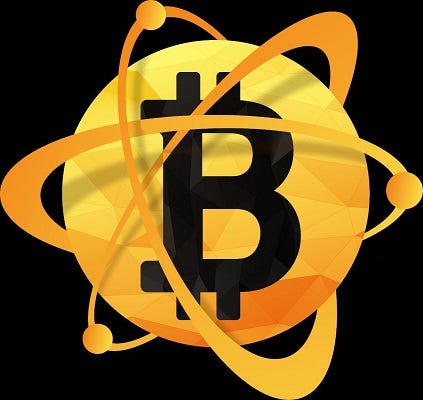Bitcoin Atom : Blockchain Revolution

Introduction
Bitcoin Atom (BCA) brings a truly decentralized way of digital asset exchangewith on-chain atomic swaps on board. By using built-in hash time-locked contracts (HTLCs) and its own HTLC API, Bitcoin Atom attempts to disrupt the way we exchange cryptocurrencies today, giving independence from intermediaries and any centralized entities.
We believe that most cryptocurrency trades should be conducted on-chain in a decentralized way, as per the original Bitcoin’s approach to transacting in a completely trustless environment.
Atomic Swaps (AS), currently implemented via HTLCs on-chain and potentially via Lightning Network (LN) off-chain, bring an ability to swap assets directly between blockchains without any intermediaries involved. This ability is called atomic cross-chain trading, and we propose the Bitcoin Atom’s support for it at its core, by bringing AS API and a set of cross-chain trading utilities into the original Bitcoin core software and forking it into BCA.
Bitcoin Atom’s AS model is expected to bring transparency to digital asset trading, as attempts to churn volume via on-chain atomic swaps will be detectable by passive observers. This means that users cannot show up with a small amount of coins and then create a ton of fake volume covertly.
BCA network is additionally secured by utilizing the so-called hybrid consensus: both PoW and PoS models are put in place, increasing network stability and reducing the power of miners, hence lowering the 51% attack probability. Despite having Proof-of-Stake in addition to Proof-of-Work, Bitcoin Atom is not inflationary in terms of emission as PoS only serves the goal of decentralizing network power. Max supply of BCA remains the same as of the original Bitcoin (21M).
What is Bitcoin Atom?
Bitcoin Atom (BCA) is a SegWit enabled Bitcoin fork that is working on on-chain atomic swaps and a hybrid consensus model. One of the most attractive components of Bitcoin Atom is its mission of creating a decentralized digital asset exchange through the use of hash time-locked contracts (HTLCs), which would allow for a true peer-to-peer exchange minus any centralized intermediaries.
Features Bitcoin Atom
=> A Hybrid Consensus Model:
While many cryptocurrencies choose between a PoW (Proof of Work) and a PoS (Proof of Stake), Bitcoin Atom uses a hybrid mix of both with the aim of increasing network stability and decreasing the influence of miners.
Referred to as a 51% attack, this hypothetical attack is when a single group of miners controls more than 50% of the network’s mining hashrate. These miners would be able to prevent new transactions from gaining confirmations, essentially immobilizing the network. Additionally, they would be able to reverse completed transactions or double-spend coins. As you can imagine, this would suck for all parties involved (except the saboteurs).
=> Lightning Network Swaps
A focal point of the Bitcoin Atom project, and where it likely gets its name, is its LN implementation that will allow for instant off-chain atomic swaps, also referred to as “cross-chain atomic swaps”.
If you’re not familiar with what an “off-chain atomic swap” is, you’re not alone. An atomic swap is simply a cryptographically powered smart contract that focuses on creating a trustless and direct exchange.
An atomic swap makes it possible for two parties to exchange different tokens without the need for a third-party intermediary such as an exchange while also eliminating the risk of default.
“Atomic” gets its name from computer programming as a reference to something that is indivisible, like atoms. In this case, it’s the trades that are indivisible. Instead of a centralized exchange or escrow managing the transaction, an atomic swap is a simple, direct transaction.
For example, if Mike and Ike want to trade via atomic swap, either the trade will happen and both Mike and Ike will get their respective tokens, or the trade will not go through. There is no possible situation where one party can bail on the transaction and leave the funds in escrow purgatory.
Cross-chain atomic swaps, as you may have reasoned, are swaps between two different cryptocurrencies running on different chains that use the same hash algorithm. These swaps can be done without a third party intermediary or any exchange and transaction fees.


In a cryptocurrency world where exchange fees hover around 0.1% and 0.25% and transaction fees hovering around $30 USD for Bitcoin, atomic swaps are a big deal.
If popularized, Bitcoin Atom could potentially solve many of the issues preventing many cryptocurrencies from being used for daily transactions.
Atomic swaps, however, are not all sunshine and rainbows. They aren’t the most user-friendly of things. The lack of a third party intermediary comes at a cost. In order to perform one, you’ll need to do it via command line and this requires some programming knowledge.
As you can imagine, this is a huge barrier to adoption for the vast majority of people. Atomic swaps are still a very new technology that is being refined and tested at both a fundamental level, and for mainstream adoption.
Bitcoin Atom Fork
The BCA fork is scheduled for mid to late January. The fork will create a one-to-one copy of each Bitcoin as a BCA. This replication of all existing Bitcoin will mean that BCA coins will be available to everyone who is holding BTC.
Several exchanges have already agreed to verify the BCA fork and allow users to trade their newly minted coins. OKEx, Coinomi and YoBit have all agreed to make BCA tradable when the fork occurs sometime in January.
Users must have access to their private keys, unless their exchange will provide support for the newly minted coins. Users can also access BCA coins directly by creating accounts on one of the exchanges above, and trading other tokens for BCA.
Ultimately, the Bitcoin network contains weaknesses that have been revealed as the network has matured. BCA will create a methodology that will help to correct those weaknesses while at the same time keeping the best features of Bitcoin, restoring the original vision of Nakamoto, and moving cryptocurrencies into the future.
IMPLEMENTATION
Bitcoin Atom is a Bitcoin blockchain fork with a major protocol upgrade that will occur in January (block number TBA). In the specified block, the original BTC block will be attached to BCA, and each transaction will therefore be completely separate on the Bitcoin and Bitcoin Atom networks. At that time, Bitcoin Atom will live on the mainnet and become a truly funcional crypto.
All Bitcoin holders who have their private key at the time of fork (block TBA number) will receive Bitcoin Atom for 1 BTC = 1 BCA. You need to control your Bitcoin private key to claim and transact Bitcoin Atom.
Typical trading processes on third-party exchanges include the following steps:
- Registration
- Verification
- Verification process
- Deposit your exchange account
- Make a reservation
- Make a withdrawal
- Withdrawal process
- Accept coins
All these steps can take a lot of time, usually from 3 to 5 business days, depending on the exchange provider.
Specification
- Symbol Ticker: BCA
- Maximum BCA: 21 Million
- Distribution: Mining, Minting, Claiming
- PoW Algorithm: SHA256
- PoW Block Interval: 10 Minutes
- PoS Block Interval: 10 Minutes
- Block size (actual): 1M (2–4M)
- Adjustment difficulty: 2 weeks
- Left confirmation average tx: 5 Minutes
- Swap atoms: Yes
- Segwit: Yes
- Re-protection: Yes
- Unique address format: Yes
ROADMAP

Details Information :
- Web: https://bitcoinatom.io/
- ANN: https://bitcointalk.org/index.php?topic=2515675.0
- Telegram: https://t.me/bitcoinatom
- Twitter: https://twitter.com/atombitcoin
- Facebook: https://www.facebook.com/atombitcoin
- My Bitcointalk Profile : https://bitcointalk.org/index.php?action=profile;u=1273699
- My ETH Address : 0x1B647E7BE42Db18A9110A53ac7af1CDd5795E6bF
Komentar
Posting Komentar